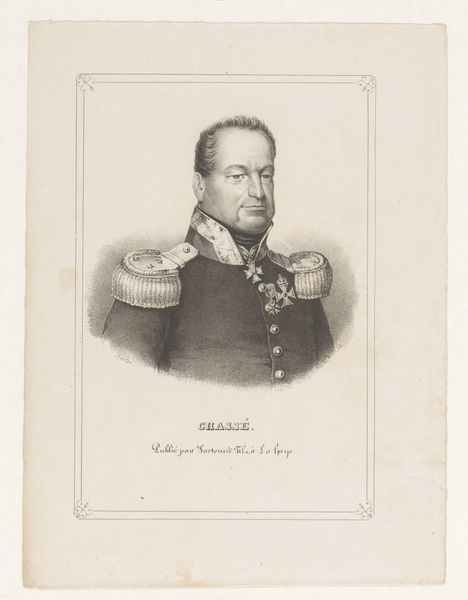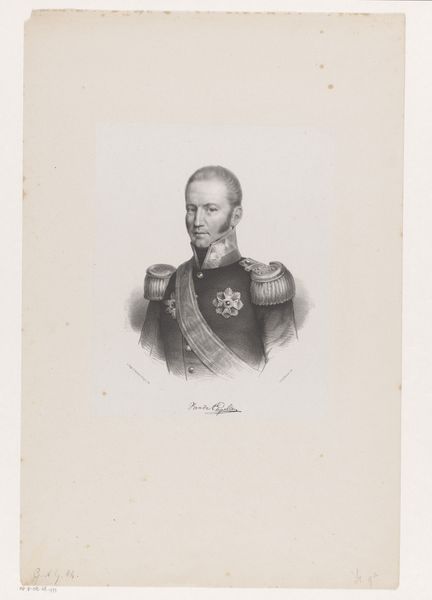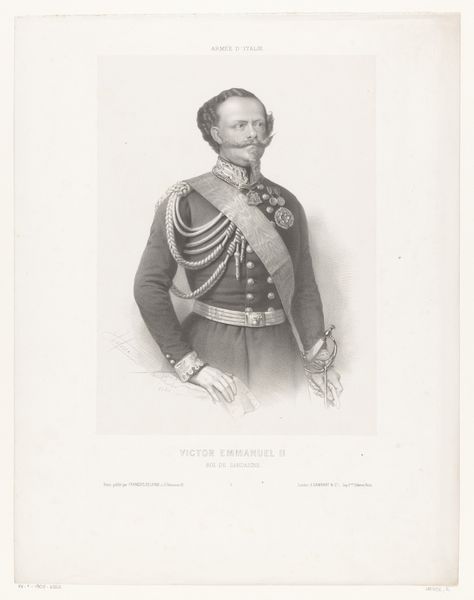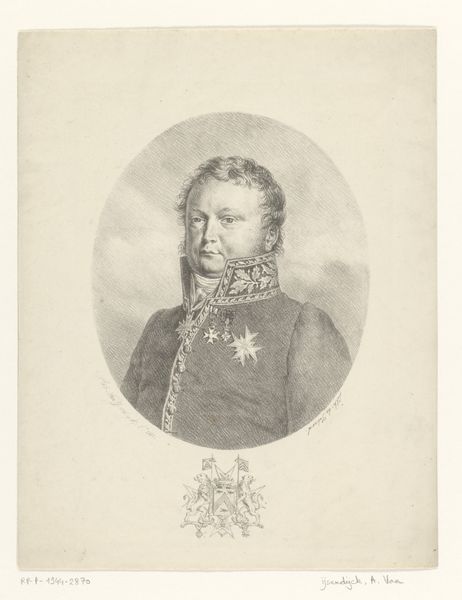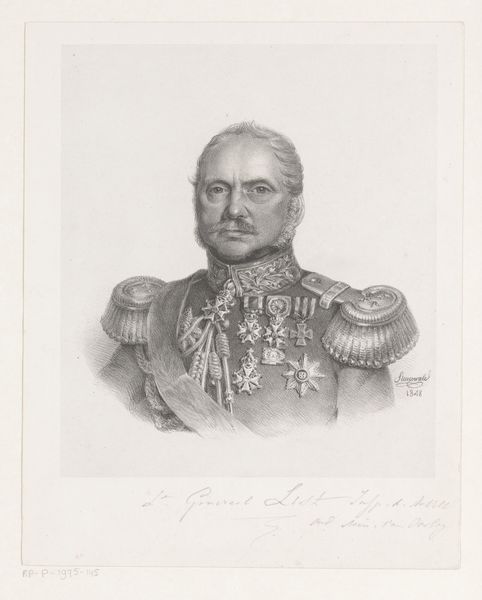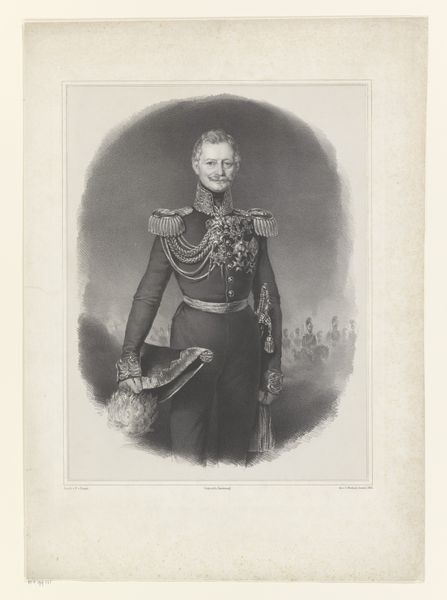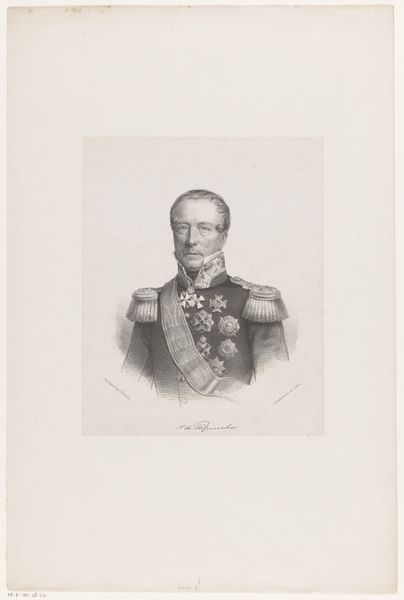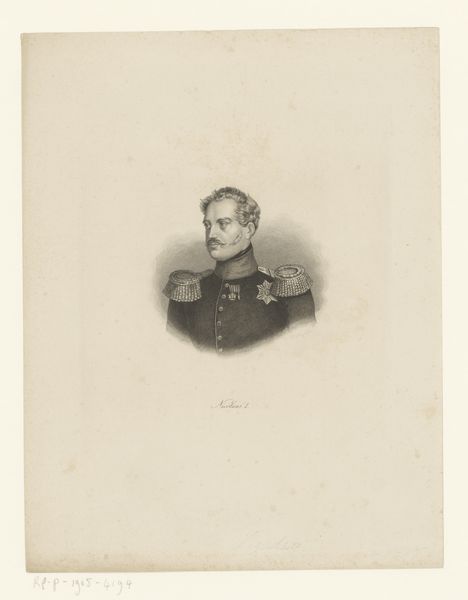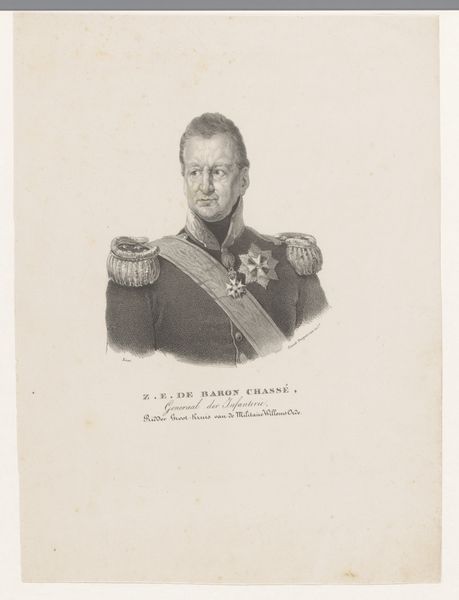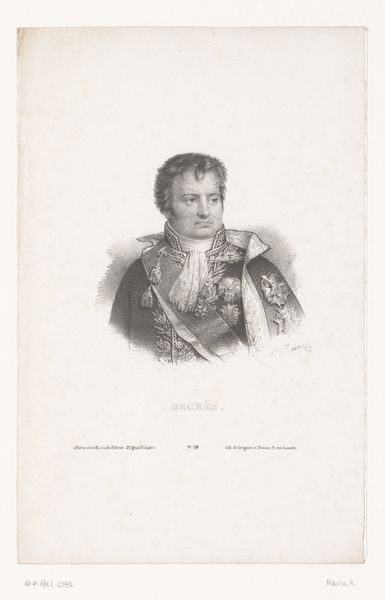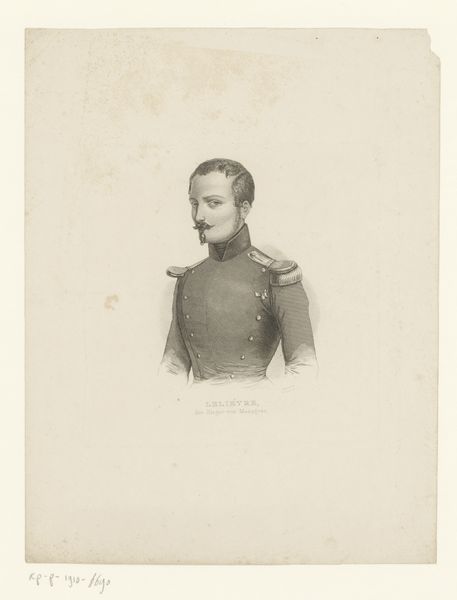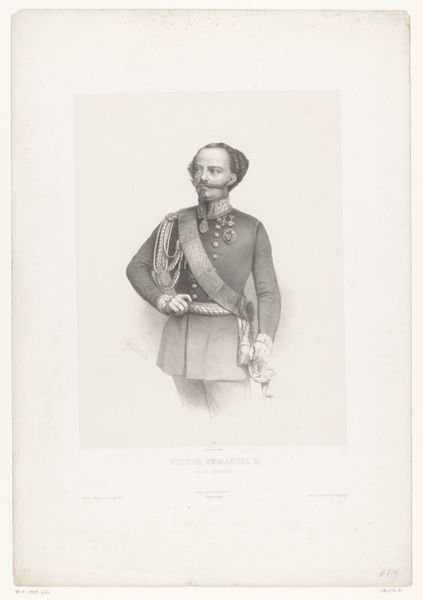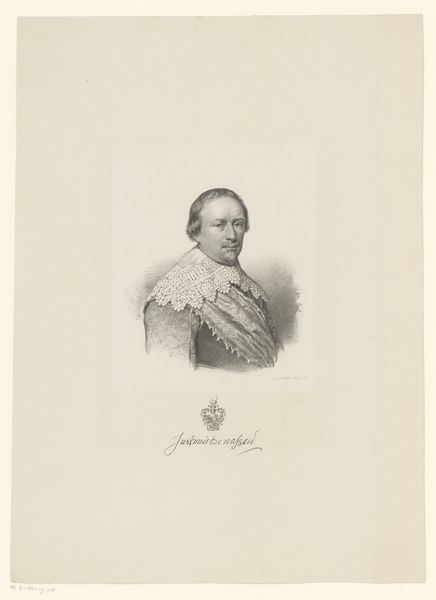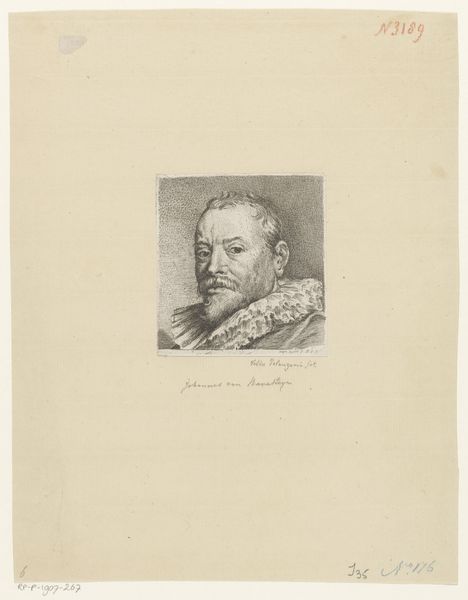
engraving
#
portrait
#
medal
#
neoclacissism
#
light coloured
#
old engraving style
#
limited contrast and shading
#
history-painting
#
engraving
#
realism
Dimensions: height 222 mm, width mm
Copyright: Rijks Museum: Open Domain
Editor: Here we have "Portret van Iwan Fjodorowitsch Paskewitsch," an engraving from between 1828 and 1871, housed in the Rijksmuseum. I'm immediately struck by how much detail is packed into such a small space. How do you approach a piece like this, with its very clear ties to historical representation and printmaking? Curator: It's crucial to understand engravings like this within the context of their production and consumption. Consider the labor involved in creating the printing plates. Engraving demanded immense skill, essentially translating artistic vision into a reproducible form. What kind of social structure would allow such time-consuming artistic practice to exist and be sustained? Editor: That's interesting – so shifting focus away from Paskewitsch himself, and towards the labour behind the portrait. I guess, it begs the question, who was the intended audience, and how accessible would engravings like this have been? Curator: Precisely. Was it meant for mass consumption, circulating images of power, or was it a luxury item? This shifts our analysis from the individual depicted to the mechanisms of power and visibility. Also, think about the material itself – the copper or steel plate, the ink, the paper. These were all commodities within a larger economic system. How do the properties of the paper interact with the printing ink and its purpose? Editor: So, by understanding those material limitations and choices, can you get closer to grasping its original societal function? That almost inverts traditional art historical analysis. Curator: Absolutely. Furthermore, how does the act of reproducing images through printmaking democratize or restrict access to representation? Before photography, engravings played a critical role in shaping public perception, in propaganda, which this engraving shares links with. How might that relate to what looks like military uniform, a symbol for consumption but also a symbol for conflict. Editor: It sounds like there’s much more to an engraving than initially meets the eye – considering the materials, the labour, and the mechanisms of consumption opens up entirely new avenues of interpretation. Thanks for shedding some light. Curator: My pleasure. Now we’ve opened up all sorts of interesting points to think about when observing an image of power through portraiture and printing.
Comments
No comments
Be the first to comment and join the conversation on the ultimate creative platform.
